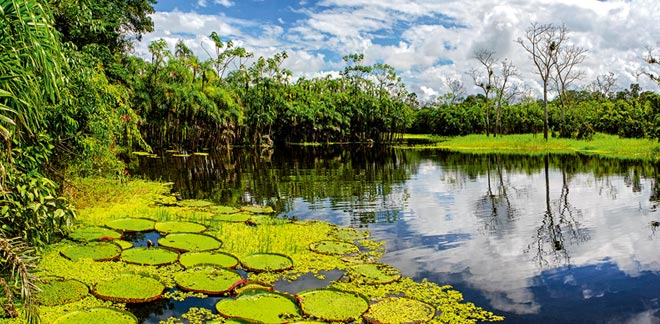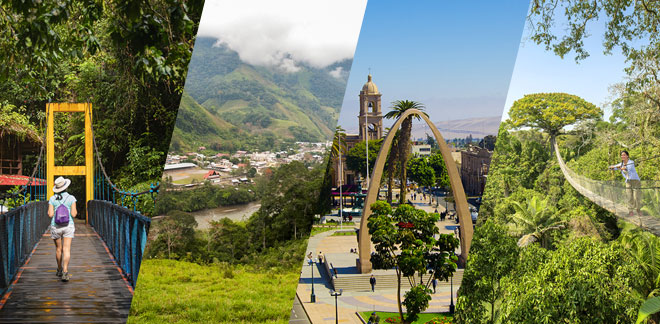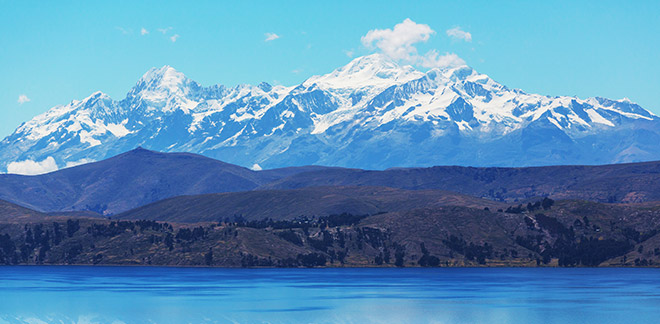Yaguas National Park: exotic biodiversity and scenic beauty in one place
Síguenos en:Google News
The department of Loreto is home to one of the most exotic settings in the Peruvian jungle. This is the Yaguas National Park, an earthly paradise considered to be one of the natural areas with the greatest biodiversity on the planet: it contains more than 1000 species, including both flora and fauna.
This destination covers an area of 2,147,100 acres and includes the districts of Putumayo (province of Maynas), and the districts of Pebas, San Pablo and Ramon Castilla, which belong to the province of Mariscal Ramon Castilla.
Biodiversity
Yaguas National Park is home to more than 900 species of animals. According to studies carried out, there are 330 kinds of freshwater fish, which amounts to two thirds of the different types of fish on the entire continent.
It is also a refuge for animals, including birds, amphibians, reptiles and mammals, which live in some kind of danger, such as the giant river otter, the anteater, the brown woolly monkey, the black caiman and the yellow-footed tortoise, among other species.
The flora of Yaguas is composed of 948 species. Nine of them are classified as new to science, and belong to the genera Aphelandra, Calathea, Carpotroche, Mayna, Cyclanthus, Pausandra and Palmorchis. It also features different types of wood such as cedrelinga, sandbox, Simarouba amara, Macrolobium acaciifolium (Benth.) Benth and Ceiba pentandra trees.
Protected Area
In 2018, the National Service of Natural Areas Protected by the State (Senarp) conferred it the title of protected area, because its great ecological value mean it is considered one of the areas with most mega diversity in the world.
This classification means that Yaguas has become an area whose ecosystem is protected from unlawful actions such as illegal logging and mining. The area is therefore free of any activities that affect the good state of its natural wealth, and which is used with great respect by the ethnic groups that live here - such as the Quichua, Bora, Ticuna, Huitoto and Yagua communities - to carry out their traditional and ancient practices.
The park was being considered by the authorities in 2011, when the debate began to define its certification. 29 native communities participated in this process, which lasted approximately seven years, 23 of them being in favor of the distinction. One of the main representatives was Liz Chicaje, a leader of the Bora ethnic group, who was given an award for her work in favor of indigenous rights.
Thanks to this distinction, a continuous forest corridor has also been created, allowing for greater gene flow in the aforementioned Putumayo River basin. The areas covered on the Peruvian side are the Maijuna Kichwa and Ampiyacu Apayacu Regional Conservation Areas.
This Amazon forest has in addition become a cult place for scientists, since some amazing species have been found in its vast flora and fauna, mentioned above, which had not been found previously.
Environmental Impact
The Yaguas National Park is considered to be a contribution by Peru to the world in the fight against the environmental threat caused by climate change.
Its wetlands allow for improved water quality and tackle natural anomalies such as erosion and flooding. Its tropical peat bogs also retain a significant accumulation of Carbon Dioxide (CO2) in the atmosphere.
Cultural legacy
According to the communities in the area, the Andean cosmovision talks about the "Sachamama" that lives in this Amazon forest, a giant snake (it can be over 65 feet long) that, according to common belief, is a protective spirit that watches over the Peruvian Amazon.
Did you know?
With the classification of the Yaguas National Park, Peru has a total of 76 areas certified as "Natural Protected Areas".
Sources: Andina/ Minam/ Gestión








